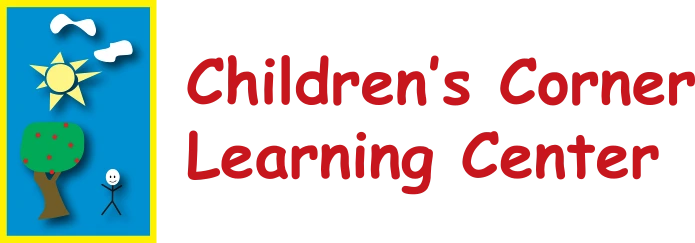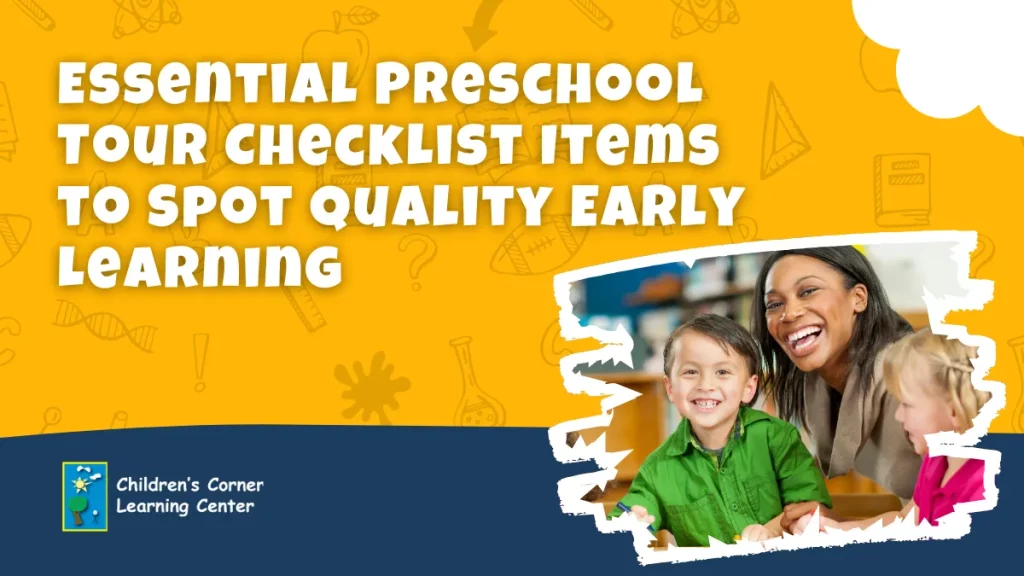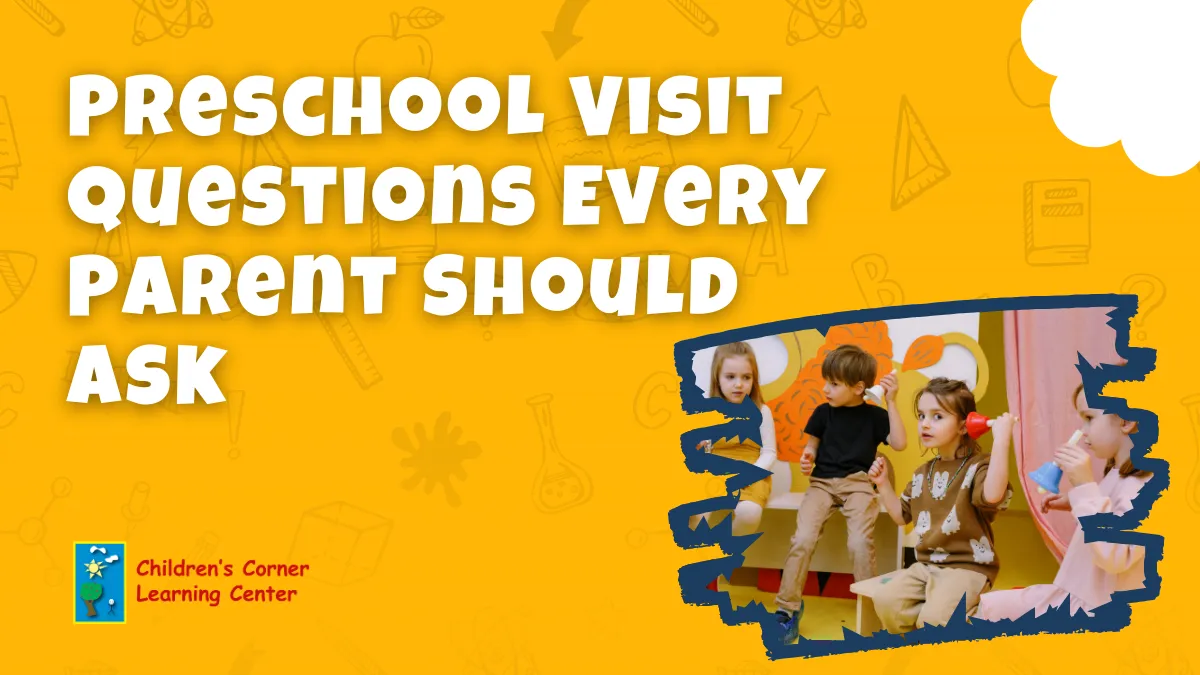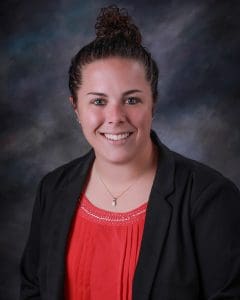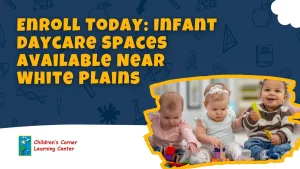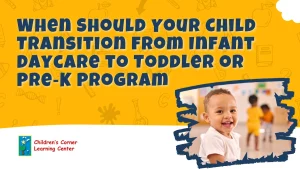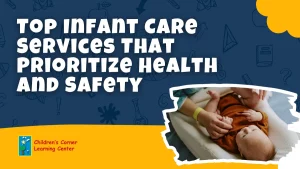A preschool tour checklist is a crucial tool for families evaluating early learning centers for their children. Touring a preschool offers a valuable opportunity to observe the environment, meet educators, and assess whether the program aligns with your child’s needs. However, important details can be overlooked without a clear list of what to look for.
From safety measures to curriculum quality and classroom dynamics, each element shapes your child’s early development. This guide highlights the key items every parent should focus on during a preschool visit to ensure a nurturing, safe, and enriching learning experience.
What to Look for on Preschool Tour: Signs of a Strong Learning Environment
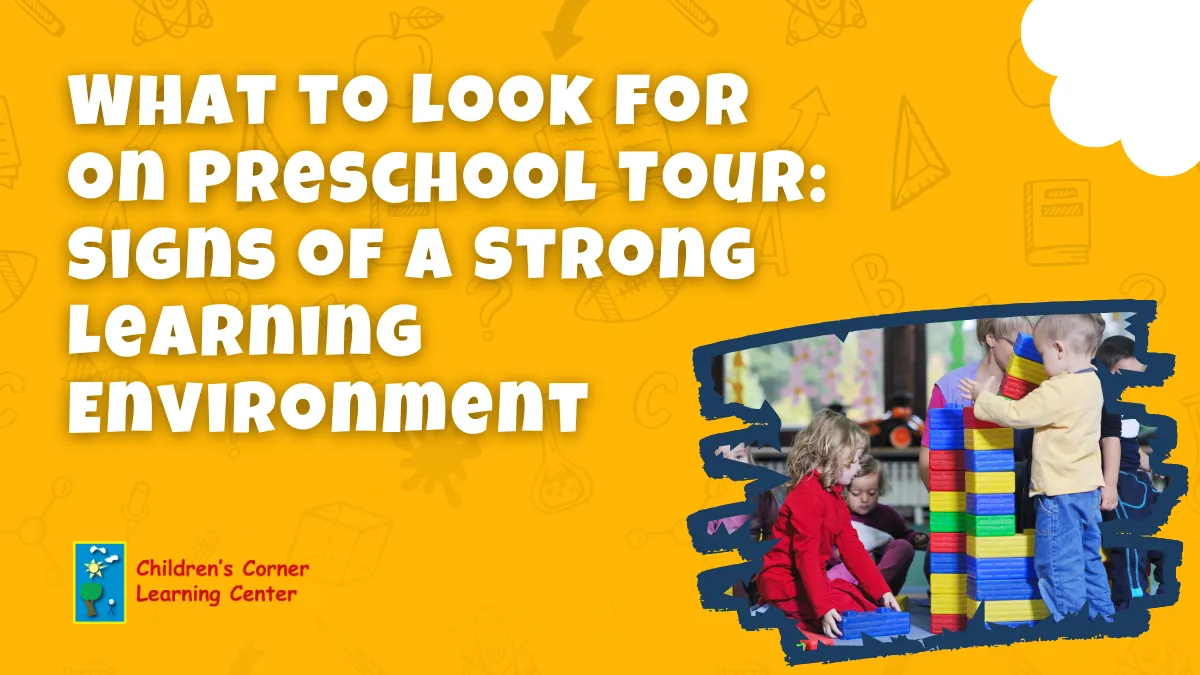
When visiting an early childhood center, the environment can tell you more than words alone. A well-structured preschool should reflect organization, care, and a clear focus on child development. Attention to specific signs will help you identify whether the setting promotes healthy learning and growth.
Cleanliness and Safety Standards
A safe, hygienic setting is the foundation of a quality preschool. As you tour the facility, note how well-maintained and secure it feels.
- Tidy classrooms and play areas: Surfaces, floors, and toys should be clean and orderly.
- Childproofed environment: Outlets, sharp edges, and hazardous materials should be properly secured.
- Emergency preparedness: Fire extinguishers, exit plans, and first-aid kits should be visible and up to date.
- Secure entry and exit points: Doors should be locked or monitored to prevent unauthorized access.
These elements show that the preschool prioritizes safety, health, and accident prevention in everyday operations.
Classroom Design and Materials
An effective classroom supports various forms of learning while keeping children engaged. The setup should promote curiosity, independence, and structured exploration.
- Clearly defined learning centers: Areas for reading, art, blocks, and dramatic play should be distinct and purposeful.
- Age-appropriate toys and tools: Materials should match the developmental stage of the children enrolled.
- Accessible organization: Items should be easy for children to reach and return independently.
- Evidence of student work: Artwork and wall projects show that creativity is valued.
These features contribute to a positive and productive learning space where children can thrive in group and individual activities.
Teacher and Student Interaction
Strong relationships between staff and children are essential. Watch for signs of respectful, engaged communication and nurturing support.
- Warm and responsive tone: Teachers should speak kindly and listen attentively to each child.
- Encouragement and guidance: Staff should support exploration while offering clear boundaries.
- Consistent routines: Children should move through activities smoothly and confidently.
- Active supervision: Educators should remain attentive and involved at all times.
Observing these behaviors will help you determine whether the program fosters emotional security, trust, and developmental support.
Preschool Visit Questions Every Parent Should Ask

Asking the right questions during a tour helps parents gain clarity about the preschool’s structure, philosophy, and overall suitability for their child. A well-informed decision begins with direct and thoughtful inquiries. Knowing what to ask can reveal how the center operates and how well it aligns with your expectations.
Questions About Curriculum and Daily Routine
Understanding how children spend their day is key to determining whether the program supports balanced learning. Ask how the day is structured and how various areas of development are addressed.
- What is your approach to early childhood education?: This reveals whether the school uses play-based, academic, or blended learning.
- How is the daily schedule organized?: Look for a mix of structured and free-choice activities.
- How are different learning styles supported?: A good program accommodates visual, auditory, and kinesthetic learners.
- Are outdoor or gross motor activities part of each day?: Physical development should be built into the routine.
These questions help clarify whether the program meets your child’s learning and activity needs.
Questions About Teachers and Classroom Environment
The strength of a preschool often lies in its educators and how they engage with students. Inquire about the teacher’s background, training, and classroom management.
- What are your teacher qualifications and experience?: Staff should hold certifications or degrees in early childhood education.
- What is your teacher-to-child ratio?: Lower ratios allow for more individualized attention.
- How do you handle behavioral challenges?: Understanding discipline methods ensures alignment with your values.
- How are new students helped to transition?: A strong program supports emotional adjustment during the early weeks.
These answers offer insight into the quality of instruction and emotional support your child will receive.
Questions About Parent Communication and Involvement
Clear communication between school and home is essential. Ask how the school partners with parents and keeps them informed.
- How often do you provide progress updates?: Look for regular conferences or written reports.
- Are parents allowed to visit during the day?: Openness to parent involvement suggests transparency.
- What channels are used for daily communication?: Consistent updates via apps, emails, or notes foster trust.
These questions ensure the preschool values collaboration and encourages parental engagement.
Building a Practical Preschool Evaluation Checklist
Creating a well-organized preschool evaluation checklist allows parents to compare programs more effectively and make informed decisions. A structured checklist helps you observe critical elements during the tour and reflect on what matters most for your child’s development, safety, and happiness.
Key Categories to Include in Your Checklist
Your checklist should be divided into categories that address various aspects of the preschool. This ensures a thorough evaluation and helps you stay focused during the visit.
- Safety and cleanliness: Look for secured entrances, clean classrooms, and clear emergency protocols.
- Curriculum and daily structure: Assess whether the program balances play, academics, and physical activity.
- Teacher credentials and ratios: Note qualifications, experience, and the number of children per teacher.
- Classroom atmosphere: Observe how students engage with teachers and peers.
- Parent communication: Check for methods of regular updates and family involvement opportunities.
These categories reflect the essential pillars of a nurturing and effective early learning environment.
Using the Checklist to Compare Programs
Once you’ve visited multiple schools, your notes will be a valuable comparison tool. To maintain consistency, evaluate each center using the same criteria.
- Rate each category: Use a scale (e.g., 1–5) to indicate how well each school meets expectations.
- Take detailed notes: Include specific observations and examples from the tour.
- Trust your instincts: Consider your impressions of the atmosphere and staff interactions.
- Discuss as a family: Review your findings and weigh what matters most to your child’s growth.
You gain a clear and objective perspective by organizing and rating your observations.
Watch for Red Flags During Evaluation
In addition to noting strengths, be alert to warning signs indicating a less suitable environment.
- Unsupervised children: Lack of attentive staff may point to safety concerns.
- Disorganized spaces: Cluttered or chaotic classrooms can hinder learning.
- Inconsistent communication: Vague responses to your questions may signal poor parent-school collaboration.
A practical checklist highlights positive features and helps you identify potential concerns. This tool supports a well-rounded, confident decision when selecting the right preschool for your child.
Observing Classroom Dynamics and Child Behavior
Observing classroom dynamics and child behavior during a preschool tour offers meaningful insight into the program’s quality and overall environment. How children interact with one another and respond to teachers reflects the level of trust, structure, and emotional support within the classroom.
Child Engagement and Social Interaction
Children should appear active, curious, and engaged in their surroundings. Their behavior during learning and play indicates how well the environment supports their development.
- Collaborative play: Children work together, share materials, and take turns.
- Focused activity: Most students are involved in purposeful tasks without excessive distraction.
- Emotional comfort: Children express themselves freely and show confidence in their space.
- Positive peer relationships: Children show kindness, patience, and cooperation with one another.
These behaviors signal a safe, supportive setting encouraging social-emotional growth and independence.
Teacher Presence and Responsiveness
Educators should be fully present and actively guiding children through the day’s activities. Pay attention to how teachers interact with children in structured and unstructured settings.
- Calm, respectful tone: Teachers use encouraging language and model patience.
- Frequent interaction: Teachers regularly speak with, listen to, and guide children.
- Conflict resolution: Staff calmly assist children in resolving disagreements or challenges.
- Balanced structure and freedom: Teachers allow creativity while maintaining clear expectations.
These qualities reflect strong classroom management and a nurturing teaching approach that fosters positive behavior and consistent learning.
Emotional Atmosphere and Group Behavior
The overall tone of the classroom should feel warm, inclusive, and respectful. Group dynamics reveal whether children feel secure and supported.
- Smiling and laughter: A joyful tone often indicates emotional well-being.
- Smooth transitions: Children move between activities with minimal disruption.
- Mutual respect: Teachers and students demonstrate regard for each other’s space and voice.
- Sense of routine: Children appear to understand and follow classroom expectations.
Observing these dynamics during a tour helps parents assess whether the preschool environment encourages healthy behavior, emotional stability, and cooperative learning.
Conclusion
A preschool tour is one of the most critical steps in selecting the right early learning environment for your child. With a clear checklist, thoughtful questions, and close observation of the classroom in action, you can gather the information needed to make a confident, informed choice. Each element, from safety and curriculum to teacher interaction and emotional tone, contributes to a strong foundation for lifelong learning.
Ready to see what a nurturing, high-quality preschool looks like in person? Call (800) 933-7757
or visit www.childrenscornergroup.com/book-a-tour to schedule your tour with Children’s Corner Learning Center today.
